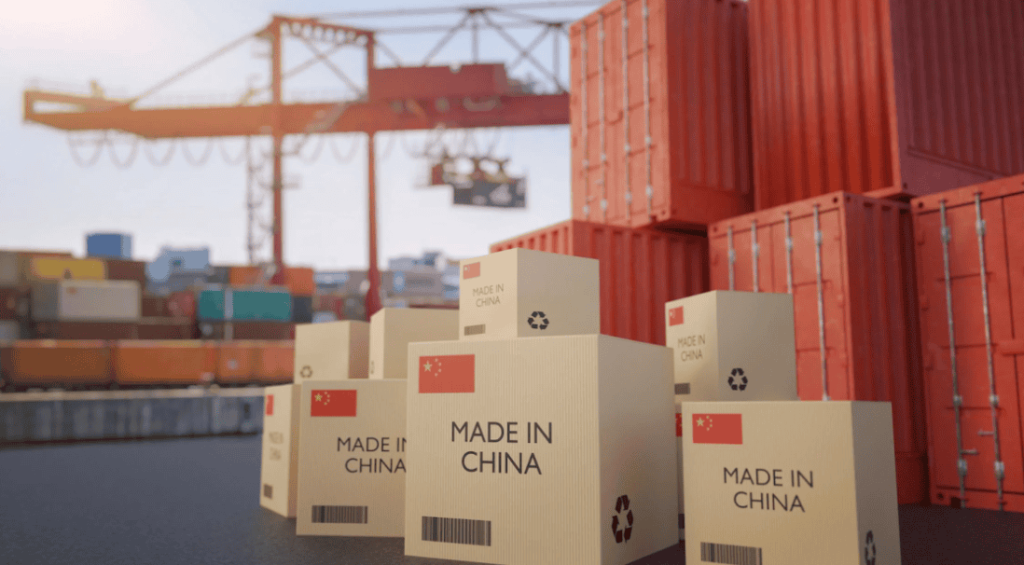China is experiencing high credit growth in its manufacturing sector, the prices of its exports are falling, and its global export share in goods has significantly increased. This column assesses potential spillovers from China to the US and the euro area. In the scenario of a credit-fuelled manufacturing boom, higher Chinese demand and commodity prices would raise inflation slightly in the US and the euro area. In contrast, a scenario in which lower Chinese domestic demand is offset by subsidised exports implies significant disinflationary spillovers. Extending this scenario to assume all economies except the euro area respond with trade barriers, the impact on euro area inflation is even larger.
China’s struggling property sector has been identified as a key risk to the country’s growth outlook (Zhou et al. 2015, Dieppe et al. 2018, Rogoff 2021) and, given the sector’s ongoing correction, China’s growth is expected to gradually slow down over the next three years (IMF 2024). However, the manufacturing sector has been expanding because of supportive policy measures, as credit is flowing despite high levels of inventories and falling capacity utilisation rates. Moreover, China’s export market share (in volume terms) remains above the pre-pandemic levels (Figure 1). Initially, this was due to China’s leading position in products demanded during the pandemic. However, despite the reversal of these pandemic-related effects on a global scale, China’s global market share has increased by around 18% since early 2023, while prices of its exports declined further (Di Sano et al. 2023). In several key sectors, such as the automotive sector, China has become a net exporter (de Soyres and Moore 2024). This sets China apart from both the US, whose market share is back to pre-pandemic levels, and the euro area, which has not yet fully recouped the losses in its market share incurred since 2020.
Figure 1 Export market shares
(volume indices, three month rolling average, Jan-2010=100)


Sources: CPB World Trade Monitor, Eurostat (via Haver Analytics) and ECB staff calculations.
Notes: The indicators refer to export market shares in volumes of global goods. All series are seasonally adjusted by Haver Analytics. The latest observations are for February 2024.
China’s strength in exports can also be linked to its extensive use of subsidies. OECD (2023) provides estimates on export subsidies in China, finding that they amount to 3% of industrial firm revenues (including indirect subsidies), 1 far exceeding the average across OECD countries (<0.2%). Such export subsidies have increased exports among G20 emerging market economies significantly (Rotunno and Ruta 2024). This raises concerns among China’s trading partners about a potential further scale-up of these subsidies to boost its exports and compensate for its domestic demand weakness (Branstetter and Li 2023). The US, Japan, and some emerging market economies (such as India) reduced their shares of imports from China since 2015 while the euro area has increased its share, presenting an additional risk for the relatively trade-open euro area economy to be disproportionally affected by subsidised exports from China. 2 Nevertheless, the reduction in imports from China to the US may overstate reductions in their bilateral trade, as common trading partners, such as Mexico and Vietnam, are increasingly acting as intermediaries to avoid bilateral tariffs (Alfaro and Chor 2023, Freund et al. 2023, Utar et al. 2023).
In our analysis, we consider three scenarios: (1) China achieves higher growth via credit support to the manufacturing sector, thus boosting domestic and foreign demand as exports become cheaper; (2) reduced Chinese domestic demand, owing to a steeper downturn in the residential sector, is partially offset by higher exports supported by subsidies; and (3) similar to the second scenario, but assuming that all economies except the euro area raise trade barriers against China in response to subsidised exports. Thus, in this scenario China would focus on generating growth via higher exports to the euro area. 3 These scenarios are simulated using the ECB-Global model, documented in Georgiadis et al. (2021). 4
In all scenarios under consideration, China’s falling export prices have a direct downward impact on import prices in the euro area and the US through final and intermediate imports. They also dampen euro area and US foreign demand via a competitiveness channel, as the trading partners of the two economies divert their import demand towards China. In addition, there is a domestic expenditure switching channel whereby domestic consumers substitute towards cheaper goods imports from China. This further reduces the demand for domestic firms’ goods, putting downward pressure on producer prices, and hence on inflation, owing to lower labour demand and wages. Ultimately, service prices are also affected through lower wages and intermediate input costs. Changes in demand for goods from China would also affect global demand and commodity prices, thereby also transmitting to euro area inflation.
In the credit-fuelled manufacturing boom scenario the GDP and inflation impact is positive but relatively muted for both the euro area and the US (Fgure 2). In terms of GDP impact, the adverse competitiveness effects from lower export prices in China, which lead to a reduction in both domestic production and foreign demand in the euro area and in the US, are offset by the higher demand from China. Similarly, the impact of lower non-energy import prices is offset by higher oil prices and higher demand (both on account of higher Chinese demand) and spillovers turn out to be slightly positive for US and euro area inflation. These results mirror findings by Barcelona et al. 2022 and Akinci et al. 2024, also studying credit-growth driven expansions in China.
Figure 2 Effects on euro area and US GDP and CPI


Source: ECB staff calculations using ECB-Global.
Notes: Scenarios simulated in ECB-Global Model with exogenous EA/US monetary policy.
In the second scenario with weak domestic demand and export subsidies, China could indeed export disinflation. In this scenario, the inflation dampening effect of export subsidies is compounded by lower global activity and foreign demand in the US and the euro area as China’s economy experiences a downturn. Foreign demand falls more strongly in the US, as the dollar appreciates in this scenario owing to a flight-to-safety effect in light of the global downturn. Non-oil import price inflation falls by up to 70 basis points in the US and by slightly less in the euro area (as US dollar-denominated import prices fall less in euro terms). The compounded effects of lower demand and lower export prices in China exert downward pressure on real GDP and inflation both in the euro area and in the US. Consequently, the growth impact on the euro area is estimated to be at 0.17 percentage points in 2025, only slightly above the 0.13 percentage points estimated for the US. The euro area’s significantly larger trade openness would suggest a heavier drag on its GDP compared to that of the US. However, the appreciation of the dollar in this scenario implies an additional drag on US exports. Consumer price inflation would be roughly 20 basis points lower for both economies in 2025 under the assumption that monetary policy is exogenous. The impact on US CPI inflation turns out to be similar to that on the euro area also because US’s indirect exposure to Chinese imports remains larger than direct exposures reviewed earlier would suggest. 5
The third scenario with weak domestic demand, export subsidies and asymmetric retaliation entails the largest negative impacts for euro area growth, which falls by 0.3 percentage points in 2025, as China’s cheaper exports are focused on the euro area, thus crowding out its domestic production. There is also a negative impact on the US owing to trade diversion towards the euro area, as the latter benefits from cheaper inputs imported from China. The same effect helps cushion the adverse impact of cheap Chinese exports on euro area GDP. Euro area consumer price inflation falls by close to 40 basis points in this scenario. 6
A decomposition of euro area inflation impact by transmission channel (Figure 3) shows that trade linkages play a major role in the second scenario and the third scenario, while financial linkages are less important. In the first scenario, the oil price increases by 2.5% relative to baseline, while in the other two scenarios the price falls by a similar amount. Overall, the oil price changes contribute a significant 10 basis points to the inflation spillover to the euro area. 7
Figure 3 Impact on euro area’s headline CPI by transmission channels
(percentage point deviations from baseline growth rates)


Sources: ECB staff calculations using ECB-Global.
Notes: Decomposition is achieved by running ECB-Global with the corresponding spillover channel deactivated. The residual captures complementarities between the channels.
Our results suggest that China could indeed export disinflationary pressures to the US and the euro area if China resorts to an expansion of export subsidies to combat weak domestic demand. In contrast, a credit-driven manufacturing boom would likely have a more muted impact. Finally, it is noteworthy that the results reported here pertain to aggregate economic impacts. The implications are likely to differ across sectors and regions in the US and euro area as China’s growth policies are likely to focus on specific manufacturing sectors, particularly the production of electrical vehicles as well as electric equipment and machinery.
Source : VOXeu



































































